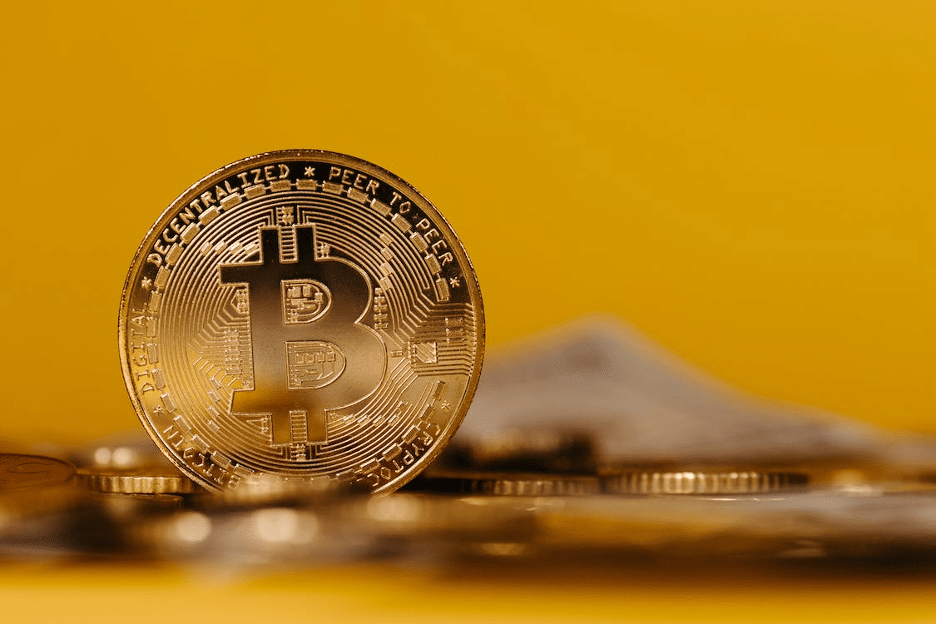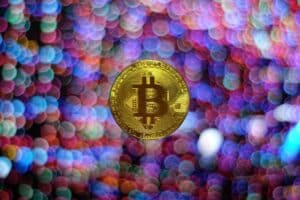Token burning has become a popular concept in the world of cryptocurrencies. This mechanism involves permanently removing a certain number of tokens from circulation. Token burning can have a significant impact on the value of a cryptocurrency and is often used as a way to generate scarcity and increase investor confidence.
In this article, we will explore the concept of token burning, its purpose, and the various approaches taken by cryptocurrency projects. We will also discuss the potential risks and controversies associated with token burning and the future of this mechanism in the broader crypto ecosystem.
The Concept of Token Burning
Token burning refers to the deliberate destruction of a certain number of tokens in a cryptocurrency. This process typically involves sending the tokens to a “burn address” from which they cannot be accessed. By reducing the circulating supply of tokens, token burning aims to create scarcity and increase their value in the market.
Definition and Purpose of Token Burning
Token burning is a mechanism used by cryptocurrency projects to maintain and enhance the value of their tokens. By reducing the supply of tokens in circulation, token burning can create scarcity, which, in turn, can drive up the demand and value of the remaining tokens. This can benefit token holders, as the increase in value can lead to higher returns on their investments.
Furthermore, token burning can also be seen as a way to align the incentives of token holders and the development team. By reducing the supply, token burning can create a more proportional distribution of tokens among holders, reducing the influence of early adopters and ensuring a fairer distribution.
While token burn mechanisms are designed to influence scarcity and value within the cryptocurrency ecosystem, the introduction of quantum ai trading adds a sophisticated dimension to the dynamics. By harnessing the computational prowess of quantum technology with AI’s predictive algorithms, it becomes possible to anticipate token burn events and their subsequent market impacts with remarkable accuracy.
As these burn mechanisms play pivotal roles in regulating token supply and stabilizing prices, the insights from quantum AI trading offer invaluable guidance for traders navigating the intricate waters of token economics.
The Process of Token Burning
Token burning typically involves sending tokens to a specific address that is unattainable. This address is often referred to as the “burn address” or the “black hole address.” Once the tokens are sent to this address, they are considered permanently removed from circulation, as they cannot be accessed by anyone.
The process of token burning can be carried out transparently. Cryptocurrency projects usually provide the transaction hash or proof of the burn, allowing token holders to verify that the tokens have indeed been destroyed. This ensures accountability and trust within the community.
The Impact of Token Burning on Cryptocurrency Value
Token burning can have a significant impact on the overall value of a cryptocurrency. By reducing the circulating supply of tokens, token burning can create scarcity, which can drive up demand and increase their value in the market. Let’s explore two key factors that contribute to the impact of token burning on cryptocurrency value.
Token Scarcity and Market Value
Token burning can create scarcity, making the remaining tokens more valuable. When the supply of tokens decreases, the demand for them may increase, as users and investors seek to acquire a limited resource. This increased demand can result in higher market value for the tokens, benefiting existing token holders.
Additionally, the perception of scarcity can create a sense of urgency among potential investors, driving up demand even further. This can lead to a positive feedback loop, where increased demand fuels higher token prices, attracting more investors to the project.
Token Burning and Investor Confidence
Token burning can also help boost investor confidence in a cryptocurrency project. By reducing the supply of tokens, token burning demonstrates a commitment to maintaining and enhancing the value of the remaining tokens. This can make the project more attractive to potential investors, as it showcases a proactive approach to ensuring token value.
Furthermore, token burning can be seen as a way to address concerns related to inflation. By regularly burning tokens, a cryptocurrency project can counteract the potential dilution of value caused by the continuous issuance of new tokens. This practice can instill confidence that the project is actively managing the token supply and working to protect investors’ interests.
Different Approaches to Token Burning
There are different approaches that cryptocurrency projects can take when implementing token-burning mechanisms. These approaches may vary depending on the goals and needs of each project. Let’s explore two common approaches: periodic token burns and transactional token burns.
Periodic Token Burns
Periodic token burns involve regular and predetermined intervals at which a certain number of tokens are burned. This approach provides transparency and predictability to token holders and the community. It allows them to anticipate and assess the impact of token burning on the token’s value.
Furthermore, periodic token burns can also be used as a way to distribute rewards to token holders. For example, a cryptocurrency project may allocate a portion of the tokens to be burned as rewards for token holders who maintain a certain balance or participate in specific activities within the ecosystem. This creates incentives for token holders to actively engage with the project and contribute to its growth.
Transactional Token Burns
Transactional token burns occur when a specific action or transaction triggers the burning of tokens. For example, in a decentralized exchange (DEX) ecosystem, a certain percentage of the transaction fees generated on the platform may be used to buy and burn tokens from the market. This approach ensures that a portion of the revenue generated by the platform is redistributed to token holders through the reduction of token supply.
This method of token burning can create a more sustainable and self-reinforcing ecosystem, as it aligns the interests of token holders with the success of the platform. As the volume of transactions increases, more tokens will be burned, resulting in a proportional reduction in supply and potentially increasing the value of the remaining tokens.
Risks and Controversies Surrounding Token Burning
While token burning can have its benefits, it is not without risks and controversies. Let’s explore two key concerns that surround this mechanism: potential for market manipulation and regulatory challenges.
Potential for Market Manipulation
One of the main concerns with token burning is the potential for market manipulation. Due to the reduction in token supply, token burning can create an artificial scarcity that may attract speculators and manipulative actors looking to take advantage of the increased demand and value of the remaining tokens.
To address this concern, it is essential for cryptocurrency projects to ensure transparency and accountability in the token burning process. Providing proof of burn and regularly communicating the details of the burning mechanism can help mitigate the risk of market manipulation. Additionally, regulatory frameworks can play a crucial role in preventing and penalizing manipulative practices.
Regulatory Challenges and Legal Implications
Token burning can also pose regulatory challenges and legal implications for cryptocurrency projects. The burning of tokens may be subject to various regulations, depending on the jurisdiction in which the project operates. It is crucial for projects to carefully assess the legal implications and ensure compliance with applicable regulations to avoid potential legal issues.
Furthermore, the impact of token burning on token holders and investors should be considered. Token burning can affect the rights and interests of token holders, potentially leading to legal disputes or challenges. To address this, clear communication and transparency regarding the token burning process and its implications are essential.
The Future of Token Burning
The practice of token burning is likely to evolve in the future as cryptocurrency projects explore new strategies to enhance the value and utility of their tokens. Let’s explore two potential directions for the future of token burning: evolving token burn strategies and token burning’s impact on the broader crypto ecosystem.
Evolving Token Burn Strategies
Cryptocurrency projects are continuously experimenting with new token burn strategies to optimize the impact and benefits of this mechanism. For example, projects may introduce dynamic token burn mechanisms that adjust the amount of tokens burned based on factors such as market conditions, token supply, or user activity. This flexibility allows projects to adapt their token burning strategies to maximize value for token holders.
Furthermore, token burning can be combined with other mechanisms, such as token staking or governance participation, to create synergies and additional incentives for token holders. These evolving strategies aim to create a more robust and sustainable ecosystem that aligns with the interests of all stakeholders.
Token Burning and the Broader Crypto Ecosystem
Token burning has the potential to impact the broader crypto ecosystem beyond individual cryptocurrency projects. As the practice becomes more widely adopted, it can contribute to shaping market dynamics and expectations. Token burning can set industry standards for tokenomics, incentivizing projects to adopt similar mechanisms to enhance token value and investor confidence.
Additionally, token burning can also influence regulatory discussions and considerations. As its impact on token value and investor protection becomes more apparent, regulators may develop guidelines or frameworks specific to token burning practices. This can contribute to the overall maturation and legitimacy of the cryptocurrency industry.
Conclusion
In conclusion, token burning is a mechanism used by cryptocurrency projects to enhance the value of their tokens and increase investor confidence. It involves the deliberate removal of tokens from circulation, creating scarcity and driving up demand. Token burning can take different forms, such as periodic burns or transactional burns, depending on the goals and needs of each project. While token burning holds benefits, it is not without risks, including potential market manipulation and regulatory challenges. However, as the practice evolves, it has the potential to contribute to the growth and maturity of the broader crypto ecosystem.




